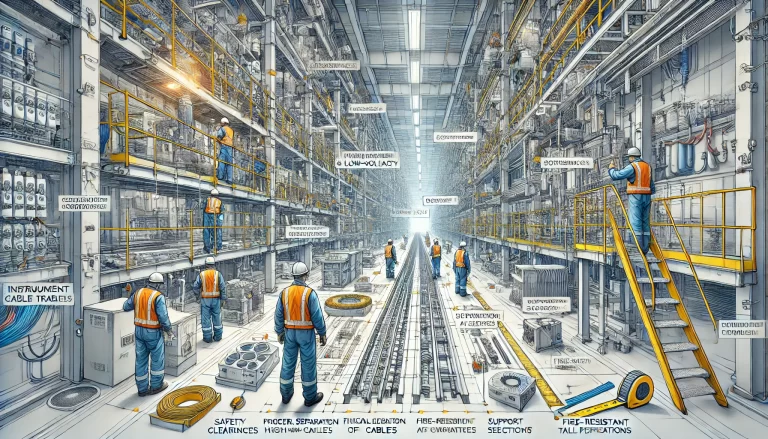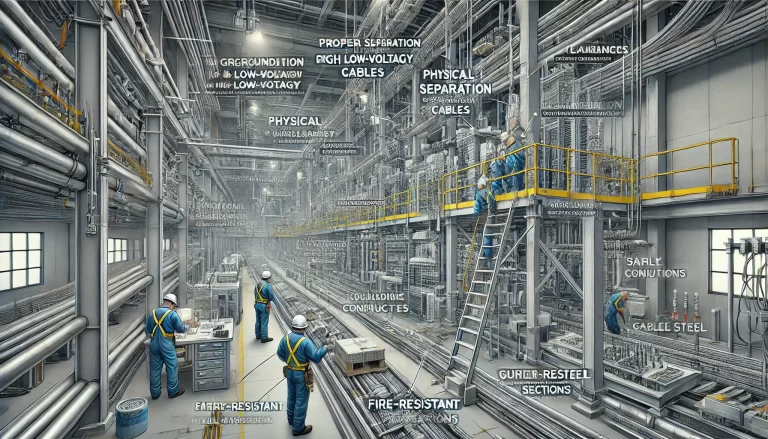Cable trays are a fundamental component in electrical and communication engineering projects. Their procurement costs constitute a significant portion of the overall budget. One key decision during procurement is whether to settle costs based on weight or length. The chosen method directly affects cost control, quality assurance, and contract management.
This article provides a detailed analysis of the pros and cons of weight-based and length-based pricing methods, considering material properties, industry best practices, and risk mitigation strategies. By the end, you will have a clear understanding of the best approach for your specific procurement needs.

How to Choose the Right Settlement Method?
1. Material Determines Pricing Basis
Steel/Aluminum Alloy Trays: Preferably settled by weight, but material standards should be explicitly defined (e.g., zinc coating thickness ≥80μm).
Fiberglass Reinforced Plastic (FRP) Trays: More suitable for length-based pricing, combined with quality binding clauses. Suppliers should provide resin-to-glass fiber ratio test reports (e.g., resin content ≥30%).
2. Project Scale and Contract Type
Large-Scale Framework Agreements: Weight-based settlement with periodic inspections (e.g., tensile strength tests for every 100 tons supplied).
Small-Scale Purchases: Length-based settlement but with third-party inspection upon delivery (e.g., checking wall thickness and coating quality).
3. Technical Specifications and Binding Clauses
Regardless of the pricing method, contracts should clearly define:
Mechanical properties (e.g., steel trays must withstand a load ≥1.5kN/m).
Corrosion resistance (e.g., salt spray test ≥500 hours).
FRP trays’ oxygen index (≥28 for fire resistance compliance).

Pros and Cons of Weight-Based Pricing
Advantages
✅ Prevents Material Shortcuts
For steel and aluminum trays, weight directly reflects material usage. If pricing is based on length, suppliers may reduce wall thickness (e.g., from 1.5mm to 1.2mm) to cut costs. Weight-based settlement eliminates such risks.
✅ Suitable for Bulk Purchases
Large projects can establish framework agreements with fixed rates per ton, simplifying cost calculations and reducing administrative burden.
Disadvantages
❌ Risk of Material Substitution (Particularly for FRP Trays)
FRP tray performance is significantly influenced by resin-to-fiber ratios:
Low-quality products: Use mid-alkali fiber and recycled resin, which reduces density and compromises durability (lifespan of only 5-8 years).
High-quality products: Use non-alkali fiber and high-purity epoxy resin, ensuring higher density and a lifespan of up to 20 years.
A potential pitfall in weight-based settlement: suppliers may increase weight by adding fillers (e.g., calcium carbonate), which degrades mechanical strength.
❌ Overlooking Process Complexity
Some intricate structures (e.g., fireproof partitions, heat dissipation holes) increase manufacturing complexity but do not necessarily increase weight. This can lead to unfair pricing.
Pros and Cons of Length-Based Pricing
Advantages
✅ Transparent Cost Estimation
Project budgets can be directly calculated based on tray length, avoiding cost fluctuations due to density variations.
✅ Suitable for Custom Designs
For non-standard trays (e.g., curved or multi-layer structures), processing costs correlate more with length than with weight.
Disadvantages
❌ Risk of Quality Degradation
Suppliers may manipulate material composition to reduce density (e.g., adding impurities to aluminum alloy) or minimize reinforcement ribs to cut costs.
❌ Price Sensitivity to Market Fluctuations
Raw material price surges can cause suppliers to demand price adjustments, potentially leading to contract disputes.

Case Study: Procurement Challenges and Best Practices
Scenario 1: A Large-Scale Industrial Project
A multinational corporation initiated a $10 million electrical infrastructure project requiring 500 tons of steel cable trays. Initially, they considered a length-based pricing model but later switched to weight-based settlement after facing issues with inconsistent wall thickness and material substitution. Outcome: Quality control improved, and supplier accountability increased.
Scenario 2: Custom FRP Cable Trays for a Coastal Facility
A coastal power plant required corrosion-resistant FRP trays. Initially, the procurement team used weight-based pricing but discovered excessive calcium carbonate fillers. They switched to length-based pricing while enforcing a resin content threshold (≥35%) through third-party lab testing. Outcome: Product lifespan increased by 40%.
Industry Best Practices for Avoiding Procurement Pitfalls
For Steel/Aluminum Alloy Trays:
Bulk procurement: Prefer weight-based pricing, ensuring material specifications are contractually bound.
Small-scale purchases: Length-based pricing is acceptable, but rigorous on-site inspection is required.
For FRP Trays:
Enforce material traceability: Require supplier certification for resin and glass fiber origins.
Verify formulation ratios: Sign a technical agreement specifying resin content (≥35%), with third-party verification (e.g., burn-off test for fiber content).
Link density with strength: Even in weight-based contracts, set a density range (e.g., 1.8-2.0g/cm³) to prevent excessive filler use.

Final Takeaway: Which Method Is Better?
| Factor | Weight-Based Pricing | Length-Based Pricing |
|---|---|---|
| Material Type | Steel, aluminum | FRP, custom designs |
| Project Scale | Large bulk purchases | Small, fragmented orders |
| Quality Control | Reduces material shortcuts | Requires strong verification |
| Cost Transparency | Prone to weight manipulation | Clearer budgeting |
| Supplier Accountability | Higher (hard to manipulate weight) | Lower (easy to use inferior materials) |
Regardless of the pricing method chosen, contractual clarity is key. Clearly defined technical specifications, quality control measures, and payment retention (e.g., withholding 10-15% of payments as a quality guarantee) can safeguard against procurement risks.
Ultimately, procurement is not just about pricing models—it’s about strategic cost management to achieve both affordability and quality assurance.
